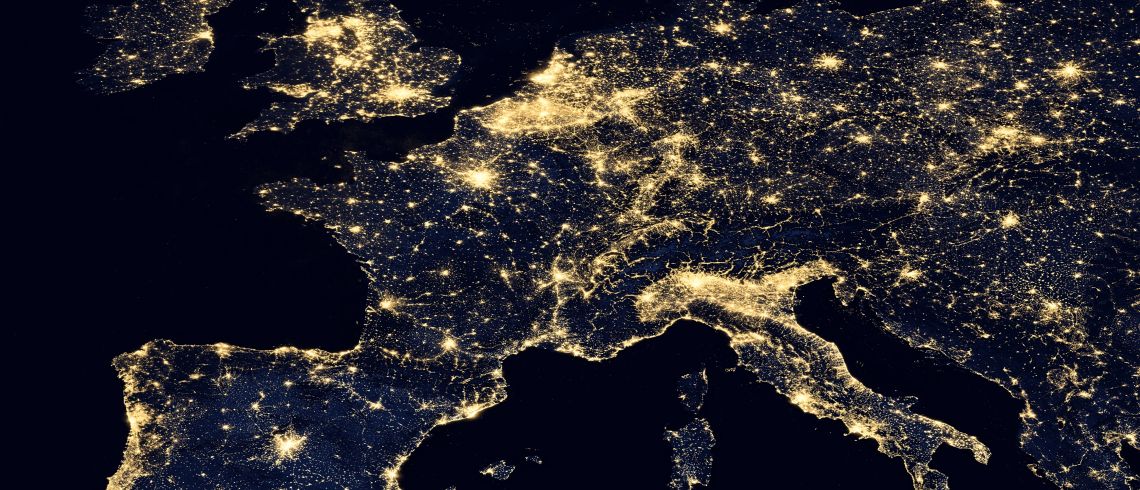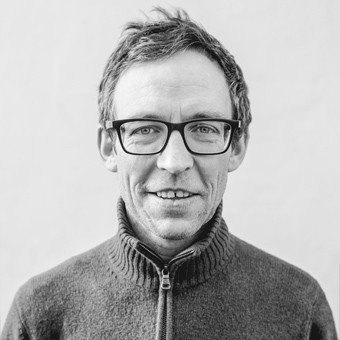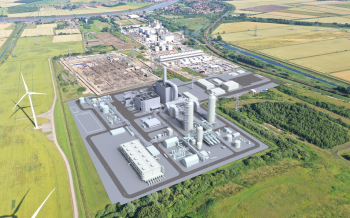In his 20-year career, Greig Aitken, project manager, Europe Gas Tracker, at Global Energy Monitor (GEM), the San Francisco-headquartered NGO that studies and catalogues global energy projects, has seen a huge shift in investor awareness of the issue of climate change, with momentum building up in the space of green financing in the past five years. But in Europe, the “big regasification bet” placed by the continent in the wake of Russia’s war in Ukraine appears inconsistent with the EU’s official energy transition goals, while the lingering presence of coal and seemingly low appetite of some European countries to push for energy efficiency are other areas of concern, Aitken says in this interview with Gas Matters.
Global energy tracker
Based in Czechia, Aitken joined GEM three years ago and is project manager for its Europe Gas Tracker dataset. “I look after all the enquiries we receive regarding our data for LNG terminals, pipelines, or gas plants in Europe,” he explains. “I also edit GEM’s Inside Gas newsletter, which offers support for NGOs around the world working on gas. We’ve done a similar publication for coal for the last 10 years, CoalWire, on which Inside Gas is modelled on.”
Aitken began his career in 2003 in the NGO space, working as media coordinator for CEE Bankwatch Network, a group based in the Czech Republic that represents a coalition of NGOs in 12 countries in central eastern Europe. The organisation’s main focus is to track and watchdog finance flows from public financial institutions, such as the World Bank, the European Investment Bank (EIB), the European Bank for Reconstruction and Development (EBRD), as well as EU funds. After seven years at CEE Bankwatch Network, Aitken worked as a freelancer, still in the NGO space, before joining Netherlands-based BankTrack in 2014, an organisation that was involved in a global campaign to push private sector banks in the US, Europe and Asia to wind up their financing for coal.
Early in his career, “people didn’t seem convinced by the argument of climate change yet,” Aitken says. “Around 2005-06, financial institutions were not that concerned by air pollution and health issues attached to the production and combustion of fossil fuels. A big change came with the Paris Agreement in 2015, which provided real momentum to climate action. And then we had the IPCC report in 2018, which is when everyone really stood up and noticed. The issue of climate change, tied to the finance element that I’ve been following, has rapidly evolved during my career. Banks are paying much more than lip service to climate change. That’s been a pretty huge shift, though financial institutions continue to heavily support the oil and gas sector, as well as the coal industry despite all the restrictions on financing that have been introduced in the most polluting energy sector.”
Countries wanting to ensure, in the short-term, their security of supply is understandable – but too much new regasification capacity is being proposed.
GEM, says Aitken, was until four years ago known as Coalswarm. Its initial focus was to amass information about coal plants around the world. From the beginning, he notes, “its ethic has been to provide open source free data to a wide galaxy of interest groups. Things began to evolve from around 2015, when we began tracking the oil and gas sector, and have had an impressive expansion since Covid in terms of what we’re tracking. We now cover most of the global power sector, all renewables, all steel plants, with global nuclear plant and hydro trackers being two recent additions. Essentially, we try to make best use of the global data we collect, and requests for free use of our numbers and technical info continue to rise.”
Europe’s regas bet
Last December, GEM released a report warning that plans to double the EU’s LNG import capacity to offset the loss of Russian pipeline volumes were at odds with the union’s climate targets. The report highlighted that, since Russia’s invasion of Ukraine on 24 February 2022, 195 Bcm/year in LNG import terminal capacity had been announced to come online by 2026, in spite of official targets aimed at slashing the EU’s gas demand in coming years.
“The report started out as a briefing that got a little bit bigger than planned,” says Aitken. “The aim was to take an end-of-year temperature check on what had been an absolutely crazy development period since the outbreak of war in Ukraine. We’ve been tracking the new LNG terminals throughout the year, and some of these terminals, in Germany, for example, have begun to come online. This huge amount of new regasification capacity is responding to a crisis situation, with countries wanting to ensure, in the short-term, their security of supply – which is understandable. The concern is that too much is being proposed.”
According to recent GEM figures, since the beginning of March 2022, 30 new LNG terminal projects, floating or onshore, were advancing across Europe. “If you look at the potential capacity numbers, there’s a conflict with what Europe is supposed to be doing by 2030, which is to reduce its gas demand quite significantly, by 55% or so,” Aitken points out. “This got flipped on its head in the space of two months last year. In Germany, terminals that were long in the making were struggling to get investment. In 2021, two of these were cancelled. There were other indications that new gas infrastructure in Europe was less likely to come to fruition. By December 2021, despite the build-up towards the war in Ukraine, there were positive signs for a non-gas energy transition to be accelerated across Europe. And then that completely changed.”
For most new LNG terminals being developed in Europe, hydrogen in the future seems a marketing label at this stage.
According to Aitken, Europe’s “big regasification bet” in the wake of Russia’s invasion of Ukraine has “muddied the waters” when it comes to the European Commission’s energy transition strategy, as mapped out, for example, in the EC’s REPowerEU plan. “There are indications that renewables will ramp up to some extent,” he notes. “There are green hydrogen targets for 2030 and beyond. But the Commission’s ideas for LNG within REPowerEU have been totally trumped by the likes of Germany, with Berlin essentially saying, we don’t have to listen to the Commission’s recommendations on what would be a suitable amount of new regasification capacity.”
Aitken acknowledges that the lifespan of floating terminals being developed could be relatively short – “five to six years, though it could go longer” – but “the way countries have jumped on regasification in this final throw of the dice for LNG is concerning because it could be setting things into stone for quite a number of years, to 2030 and 2035, if not longer,” he stresses. “A lot depends on what actually becomes of the onshore terminals being developed.”
Germany’s influence
When it comes to claims made by the developers of new LNG terminals in Europe that their assets could eventually be converted into clean hydrogen hubs, Aitken has his doubts. “Firstly, there’s a question over the actual feasibility and financial viability of transporting huge volumes of hydrogen. Then there’s the actual technological setup of LNG terminals themselves. Many promoters sticking hydrogen convertibility or suitability onto the marketing of the new terminals. But there’s not much other information. Importing hydrogen within the technological constraints of these terminals will add significant costs, which makes me pretty sceptical of how this is being talked about.”
Though “greenwashing” is a phrase Aitken does not use lightly, “it is very hard to resist the temptation to use it in this case,” he says. “In Germany, there’s one terminal being developed by TES in Wilhelmshaven, and another in Brunsbuttel, where there’s talk of importing ammonia, and both are clearly being geared towards becoming green hydrogen hubs in the future, though it’s uncertain when. But for most of the others, hydrogen in the future seems a marketing label at this stage.”
Pragmatically speaking, there is likely to be some gas in Europe’s power mix throughout the 2030s, though it should be fast declining.
Germany’s role in influencing Europe’s decision-making in the energy transition is “absolutely central,” says Aitken. “A key part of the problem is its anti-nuclear stance. With nuclear out, and now Russia, one of the central planks of Germany’s energy model, literally blown up, the walls are closing in for them energy-wise. It will lead to some sort of fight between coal and gas for a good few years, while renewables get less red tape, hopefully.” Though Germany’s Greens form part of the current coalition government in Berlin, “they seem prepared to be pragmatic in this energy crisis and go against their green principles,” Aitken points out.
For Europe to handle its energy crisis more efficiently and reduce its natural gas demand, more effort needs to be made in promoting energy efficiency, Aitken believes. “We don’t really talk about the energy efficiency potentials that are there,” he says. “Since I started at BankWatch in 2003, it’s been clear that former Soviet Bloc countries, for example, don’t think that an energy efficiency initiative is worthy of a ribbon cutting ceremony. But everyone involved in energy – analysts, officials and governments – know what can be done to bolster efficiency. There’s huge scope for major public programmes to really ramp up energy efficiency, for Europe to be put on a war footing to achieve this as soon as possible, ideally with a lot of support from Brussels. Things have been happening, but efforts have not been as concerted or high profile as the LNG drive has been. It’s the same old story, but there’s this real opportunity to get deep cuts in gas demand by retrofitting… everything, basically.”
Bump on the road
Aitken describes the past 12 months as “a great, big bump in the road” for Europe’s energy transition. “Its effects are just not clear yet, but the way things have gone has definitely taken some of the momentum away,” he says. However, recent data by energy think tank Ember, which track the European power sector, “show surprisingly good figures on renewable development,” he adds, with Ember saying that wind and solar power generated a record 22% of Europe’s electricity in 2022, overtaking natural gas for the first time ever.
“Pragmatically speaking, there is likely to be some gas in Europe’s power mix throughout the 2030s, though it should be fast declining. As far as coal is concerned, I would hazard a guess that we’re not going to see the back of it entirely in Poland, Bulgaria, and probably Greece until the late 2030s.”
Aitken admits he’s “less hopeful” about the pace and depth of Europe’s energy transition than he was a few months ago, but expects cost-competitiveness and investor appetite to be huge factors in how it pans out. “The trends on costs for renewables appear repeatedly favourable for renewables,” he highlights. “In terms of hope, that’s something to cling on to.” - KT
Subscription Benefits
Our three titles – LNG Business Review, Gas Matters and Gas Matters Today – tackle the biggest questions on global developments and major industry trends through a mixture of news, profiles and analysis.
LNG Business Review
LNG Business Review seeks to discover new truths about today’s LNG industry. It strives to widen market players’ scope of reference by actively engaging with events, offering new perspectives while challenging existing ones, and never shying away from being a platform for debate.
Gas Matters
Gas Matters digs deep into the stories of today, keeping the challenges of tomorrow in its sights. Weekly features and interviews, informed by unrivalled in-house expertise, offer a fresh perspective on events as well as thoughtful, intelligent analysis that dares to challenge the status quo.
Gas Matters Today
Gas Matters Today cuts through the bluster of online news and views to offer trustworthy, informed perspectives on major events shaping the gas and LNG industries. This daily news service provides unparalleled insight by drawing on the collective knowledge of in-house reporters, specialist contributors and extensive archive to go beyond the headlines, making it essential reading for gas industry professionals.






